
Phu Quoc
How to travel to Phu Quoc for your best experience
Phu Quoc Travel Guide – What to do, when to visit, and more…
As being asked more and more often about When to go, What to do, How to get to Phu Quoc… we would like to make this article for you to have a better view on the destination, as well as to offer some tips on How to travel to Phu Quoc for your best experience. Read on, and hope you may find your idea soon.
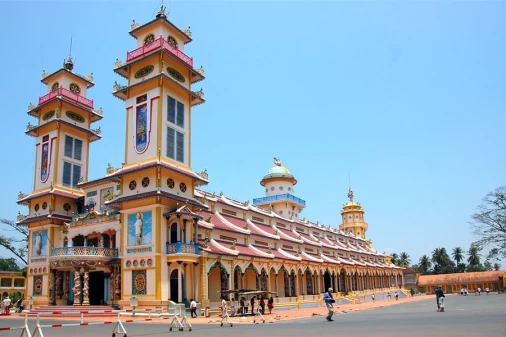
Cao Dai Temple Phu Quoc
History: Phu Quoc is considered as the birthplace of Caodaism. As a monotheistic religion with its fusion,...
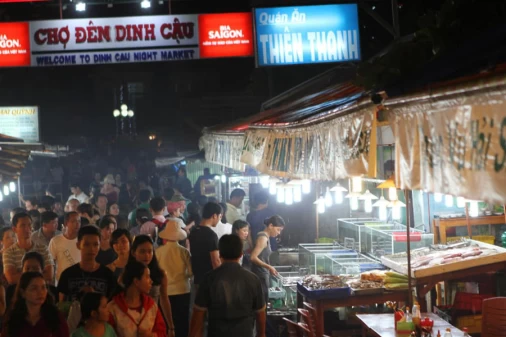
Dinh Cau Night Market
Description: Dinh Cau Night Market is one of should-not-miss attractions in Phu Quoc. This market is...
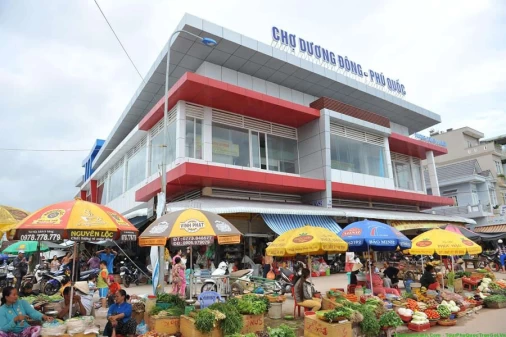
Duong Dong Market
Description: Duong Dong Market is the largest market in the pearl island and also home to purchase seafood...
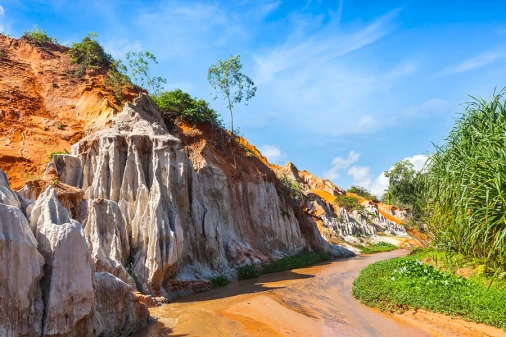
Fairy Stream
Description: Fairy Stream is an ideal place for tourists who would like to immerse in the wild nature....
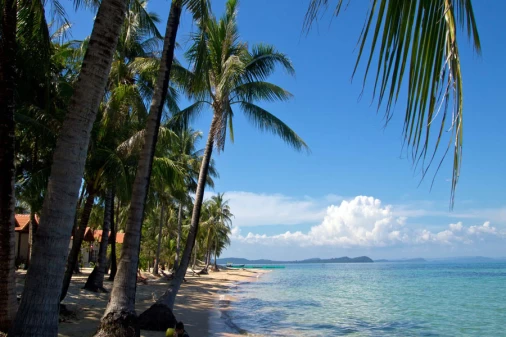
Ganh Dau Cape
Description: Ganh Dau is a spit of land jutting into the sea in the northwest of Phu Quoc island, the...
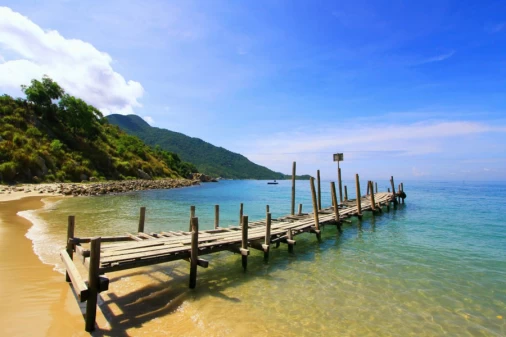
Ham Ninh Fishing Village
History: No one knows this village existed for how long, just know that, when the island was deserted,...
Frequently asked questions
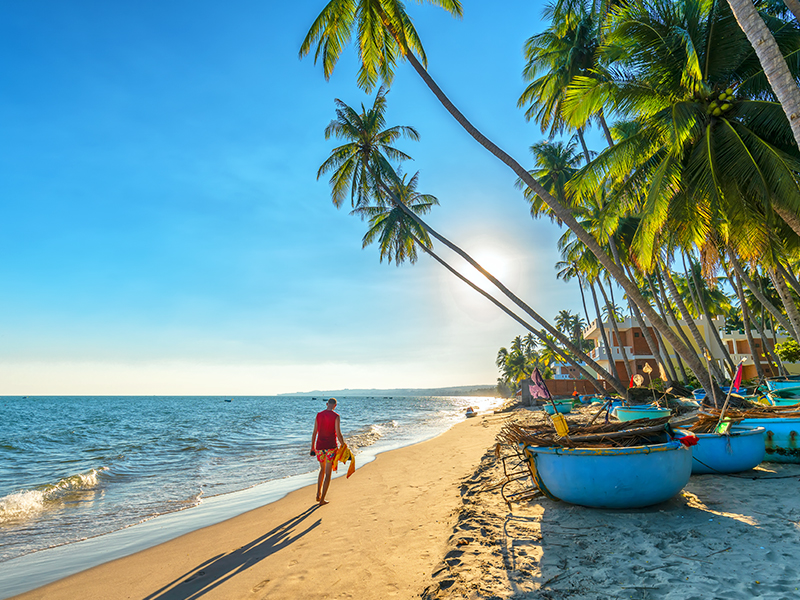
As dubbed as the paradise of sunshine, was voted to be “The Cleanest and Most Beautiful Beach of the World” by ABC News in February 2008, Phu Quoc is the largest tourist tropical island located off the west coast of the Mekong Delta. To Phu Quoc is to the beauty of wild nature and above all, to conquer the distant land of the charming country with the lovely name be “Viet Nam”.
While there are also many stunning beaches and picturesque landscapes across the country, Phu Quoc manages to set itself apart. This tear-shaped island is made more appealing by the truth that it is quiet and stays uncommercialized, yet non-touristy, so one can appreciate the scenic sights even more.
There are more than a dozen beaches to visit in Phu Quoc Island. All of them have almost transparent, turquoise seas. The waters are also blessed with coral reefs and tropical fish of various shapes and colors. This is why Phu Quoc is one of the most famous destinations in Vietnam.
● To enjoy the beautiful beaches of Phu Quoc…
… where you may laze away in the sun or spend time witnessing the breath-taking views.
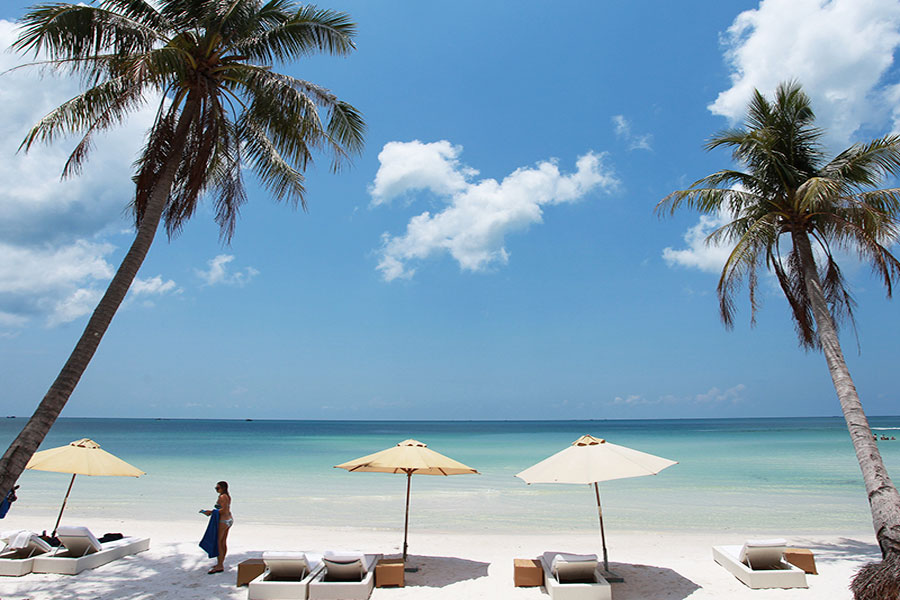
1. Dai Beach, the long stretch of fine sand beach with turquoise water lapping at the exposed roots of casuarina trees, is the remote paradise with mild sunshine, warm climate and peaceful atmosphere that was featured on CNN Go’s 20 idyllic beach getaways in May 2010. You are free to experience the beauty of these pristine beaches, join the game of kayaking, fishing, and diving, or watch corals and other aquatic animals. Dai Beach has all the makings of a perfect and private paradise oasis.
2. Sao Beach, touted as one of the best and lesser-known beaches in Vietnam, is the amazing place still boasts a fairly basic existence and is an essential trip when visiting Phu Quoc. With its marvelous white sand, green-turquoise water, swaying palm trees and jungle backdrop, Sao Beach is the “perfect postcard” one that travelers searching for. Hanging offshore further, you will find schools of small fish, needle nose fish, and even squid under the water sometimes. This is a great rendezvous to relax attracting tourists to Phu Quoc travel, indeed, Sao Beach brings pristine and innocent beauty of a pubertal girl making up on the dressing table.
3. Vung Bau Beach (also known as the “Circling Beach”), the appealing northern beach reachable via the coastal road, is one of the last vestiges of Phu Quoc. Located in the northwest of the island, thereof the sand is powdery and dark yellow in color and the beach is relatively clean without too much ocean or human debris scattered about. The foliage around the beach is also interesting, with a mix of tall grass, various coastal flowers, also a combination of poplar and coconut palm trees. This semi-wild beach in beautiful crescent-shaped delivers the stunning view of the non-touristy area that you may hardly find elsewhere.
● To travel Phu Quoc islet to islet…
… so you would be rewarded with unspoiled sand and wonderful scenes.
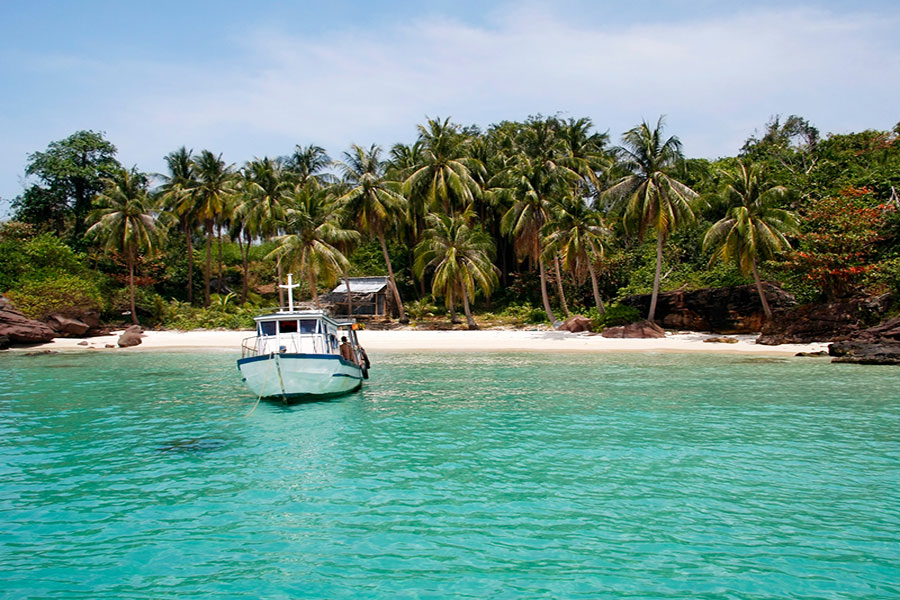
1. Thom Island, which is commonly referred to as “Pineapple Island”, is the largest island in An Thoi archipelago and the second largest one of Phu Quoc as a whole. It is home to the world’s longest oversea cable car and bills itself as a premier eco-tourism destination that owns a picturesque fishing village and fine underwater zone.
2. Mong Tay (Fingernail) Island is located in the south of Phu Quoc, in the An Thoi Archipelago and is a rarely visited dream island. The beach is rather small and has just the island’s jungle behind it. The sand is magnificently white, the water clear and turquoise and the view at the archipelago is just awesome. The sea is very calm during the dry season and there are no underwater currents that making this place an ideal risk-free destination.
3. Dam Ngang Island, also called “Gam Ghi” Island, is an idyllic island, a part of An Thoi Archipelago which consists of 17 different small islets that surrounded by coral. The beach is picturesque that make you feel being at paradise. The sand is soft powdery white and the sea is clean and turquoise in color. Even though it is a small island, but Gam Ghi is one of the most beautiful beaches in Phu Quoc and stays relatively uncovered.
4. May Rut Island, nested in the heart of An Thoi Archipelago, is home base for endless kayaking, paddleboard, snorkeling and speed boat charters. It is widely considered to be one of Phu Quoc’s best “all-around” islands. Once arriving, visitors can enjoy a fresh shore seafood lunch, relax in a hammock, camp on the beach, and explore other nearby islands.
● To visit tourist attractions of Phu Quoc…
… with both historical and natural sites.
1. Coconut Prison, another must-watch site in An Thoi, is historically the concentration camp since the French domination in the 50s to the “Hell on Earth” often-referred prison during the American war in the 70s. One might be scared of recalling a long deadly period, by its nature, but letting the painful past gone, this is where you can truly witness the history of Vietnam.
2. Duong Dong Harbor, the first place on the route of visiting, where gathers hundreds of fishing boats in various colors and shapes, bustling back and forth from dawn till dusk as you’ve often seen in a time-lapse motion picture. This harbor is also whispered among forums as one of the
best spots to catch the crimson sunset in Phu Quoc, especially, if a photographer you are.
3. Cau Template (a.k.a Dinh Cau Rock), an odd-shaped natural formation in Phu Quoc Island, which local fishermen pray to before embarking on fishing excursions. It holily features a brightly-colored lighthouse and Buddhist shrine, making itself a most-visited natural outdoor photography studio among those who love to take beautiful pictures.
4. Ganh Dau Cape is located in the northern section of Phu Quoc Island, which pristine forests, mountains, seas remain intact. Compared to southern North Island is sparsely populated and much poorer. However, natural beauty, are not inferior, Ganh Dau is an example. Here is a bow beach running over 500 meters long, shielded by two mountains. Standing on Ganh Dau, you can see the TaLon mountain of Cambodia. Ganh Dau has a lot of corals, rocks and other kinds of fish, particularly red grouper. The seafood here is cheap that caught by the fishermen and cooked on the spot to be ready for you to enjoy.
5. Tranh Stream is a terrific spot that tourists who once have a chance to drop by Duong Dong town should not miss out. The 15km long stream which originates from Ham Ninh Mountain flows through diverse terrain in the forests to create beautiful waterfalls. White waterfalls flowing down in the greenery of the forest certainly draw a picturesque scene in front of the tourists’ very eyes. Perhaps, the name Tranh (picture) stems from the spectacular gorgeousness of the stream and surrounding scenery.
6. Phu Quoc National Park comprises more than half of Phu Quoc Island’s northern region, where adventurous travelers can enjoy a range of outdoor pursuits throughout their tropical vacation. Declared a UNESCO Biosphere Reserve in 2010, this massive natural attraction spans over 314, 000 square meters of unique flora and fauna, evergreen forest, and dense mountain ranges. Nature lovers can also spot rare wildlife such as long-tailed macaques, silver langurs, slow loris, otters, and hornbills.
● To pass by trade villages of Phu Quoc…
… to find out that Phu Quoc is not all about the beaches.
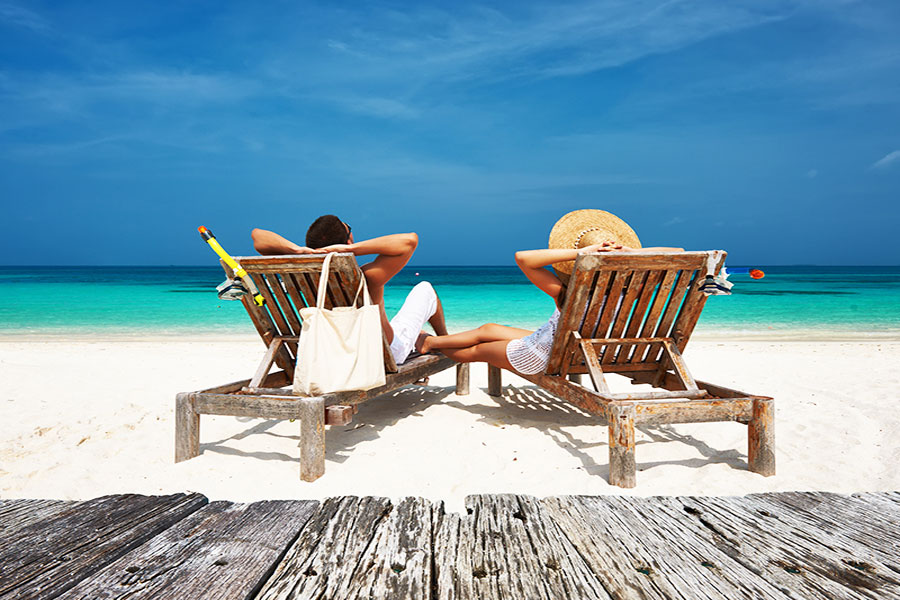
1. An Thoi Fishing Village, a site of the same name island districts’ second largest town, which is considered the crown jewel of Phu Quoc’s tourism industry. Located in the southernmost tip of the main island, An Thoi is blessed with numerous beaches, historical sights, and a coral-fringed
island archipelago. It is not hard to imagine why this place accounts for 80% of visitors of all time.
2. Ham Ninh Fishing Village is an ideal locale for foreign visitors looking to experience the daily life of local fishermen as well as authentic regional dishes at affordable prices. Widely known as one of the oldest villages on Phu Quoc Island, its residents’ main sources of income include diving for pearls and sea cucumbers, fishing and, in recent years, selling handmade souvenirs and seafood delicacies to tourists.
3. Rach Vem Floating Fishing Village, a seldom-visited place lies in the island’s remote north. On the way to getting here, eyes are open to thick tropical jungle covering the hills, as they drop down to meet the pristine waters of the Gulf of Thailand. The beach is quiet and calm, and the fishing villages are rustic, almost completely undisturbed by tourism in the backdrop of forested hills spectacularly.
4. Sim (Rose Myrtle) Winery, is an interesting place not only for wine lovers alone. As being said, this type of wine has natural healing properties that help with fatigue, aide digestion and reduce joint pain, of which the recipe originated from various ethnic minority groups living in the central highlands. This special wine can be given as an unusual souvenir and is best used with the seafood.
5. Pearl Farms were built up in quite a number of facilities, which is out of surprise since Phu Quoc has been labeled “The Pearl Island”. The pearl farming industry here has been spurred on with the help of pearl farming techniques from various places around the world, thereupon, fined off pearls are considered the favorite merchandises for export, also the wanted wares to consume domestically. During the visit, you’ll gain a fascinating insight into the process of oyster cultivation which turns it from simple oyster to beautiful jewelry.
6. Fish Sauce Factory, where produces very high-quality fish sauce which is widely domestic consumed and worldwide exported. The primary ingredient is select fresh wild-caught anchovy from the crystal-clear waters off Phu Quoc island archipelago, combining anchovies, salt, and fermented through various stages for six months up to a year before being drained from the large barrels. Reportedly, Phu Quoc produces over an incredible 12 million liters of fish sauce each year. Wonder how they made it? Let us come and see ourselves.
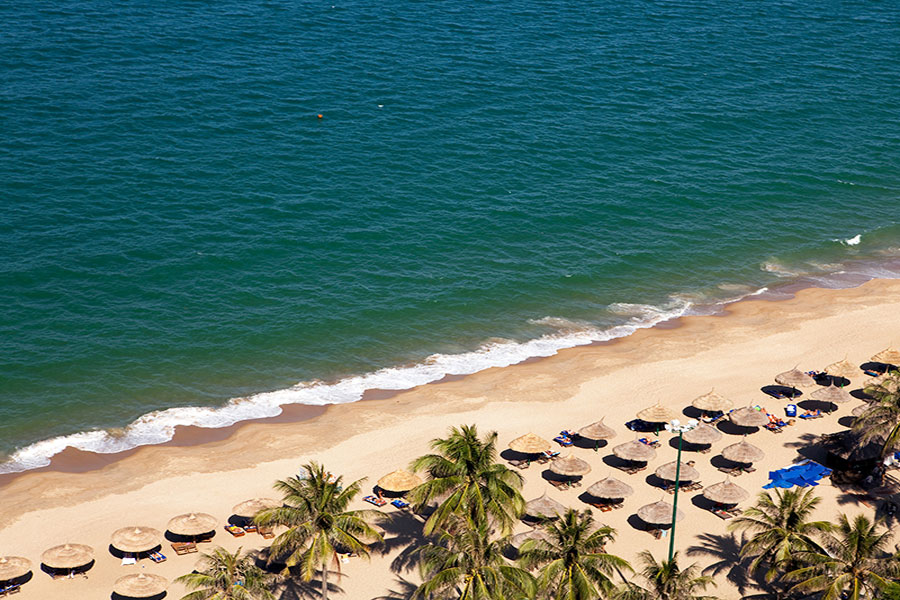
7. Duong Dong’s local market, not very far from the harbor, which is no less busy due to high demand and traffic from tourists searching for stuff around. Things for sale are plentiful, setting out from the wet to dry zone and varying from insular herbages to fresh seafood, the world-class fish sauce also apparel souvenir. This area is truly where local life is taken place.
● To play favorite sports at Phu Quoc…
… if you prefer some recreational activities than just sunbathing on the beach during your holiday.
1. Kayaking: Phu Quoc provides ideal weather conditions and calm waters during most times of the year for kayaking. If you are a fan of this sport then kayaking on Long beach provides plenty of open space and only a little other boat traffic. Recently, there are more and more resorts provide either free or rental kayaks for visitors.
2. Scuba diving: There are some dive sites around the north of Phu Quoc but most dive trips head to the pristine reefs of both hard and soft corals that teem with colorful fish around An Thoi. Nice reasonably shallow dive sites are numerous and dive centers can be found easily around the island.
3. Snorkeling: Phu Quoc’s crystal clear waters offer some of Vietnam’s best snorkeling. Reefs fringe many of the islands and islets that make up the archipelago and snorkeling tours run daily during high season and will show you underwater habitats full of life and color. The ideal spot for snorkeling is An Thoi archipelago, which consists of 12 islands located due south of Phu Quoc with pristine scenery and an abundance of reef fish.
4. Jet-skiing: Still new to Phu Quoc, though starting to appear are the usual variety of water sports, including jet skiing and wind sailing, with just a matter of time before water skiing takes off given the calm waters around the island during the high season. The best places to find these water sports include some of the resorts on Long Beach including Saigon Phu Quoc Resort and some Jet Skis are available on Bao Sao beach at My Lan Resort.
5. Cycling: Most hotels offer bicycle rentals which start from US$1 per day, which can be a great way to adventure around the local area. If you plan on cycling further away, be prepared for poor road conditions and unsealed dusty roads along the way. The coastal strip surrounding Phu Quoc makes cycling relatively easy however the island heats up when you get to move from the coast.
As you may see, the list of things-to-do in Phu Quoc goes long. However, for most first-comers, we suggest a 3-day itinerary to visit outstanding attractions and spend time relaxing by the beautiful beach.
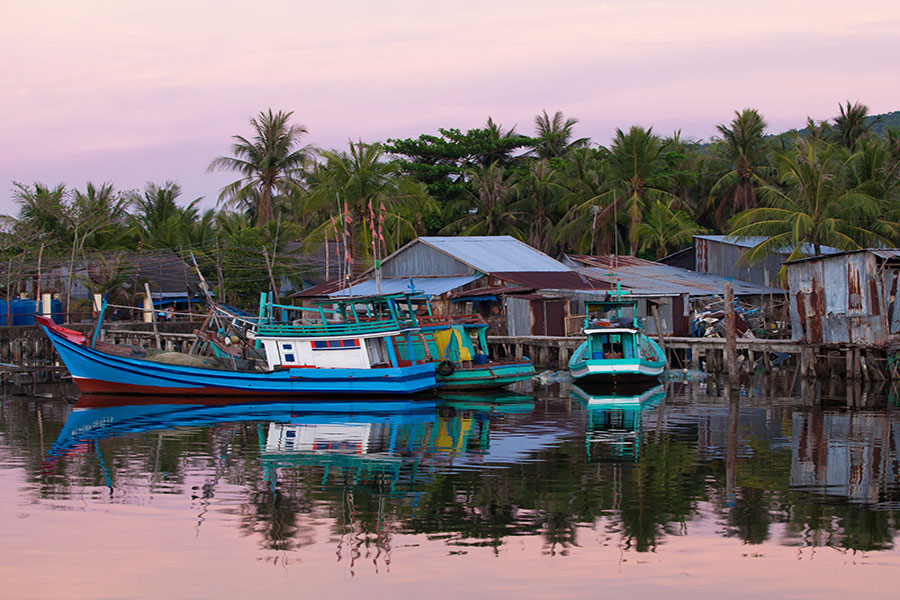
Day 1: Duong Dong town – Ham Ninh Village – Sao Beach
AM: From Duong Dong town head to Ham Ninh village, which is 20km away. Watch the fishermen on their job and take some photos with vivid background. Enjoy fresh seafood on the spot and bring home some marine souvenirs.
PM: After lunch, reach another 20km further to the Sao Beach. Be ‘wow’ before the picturesque scenes, put on your swimsuit and rush to the sea. Till evening, get back to Duong Dong town and join the night market. Have an extreme local experience by enjoying foods and doing some shopping.
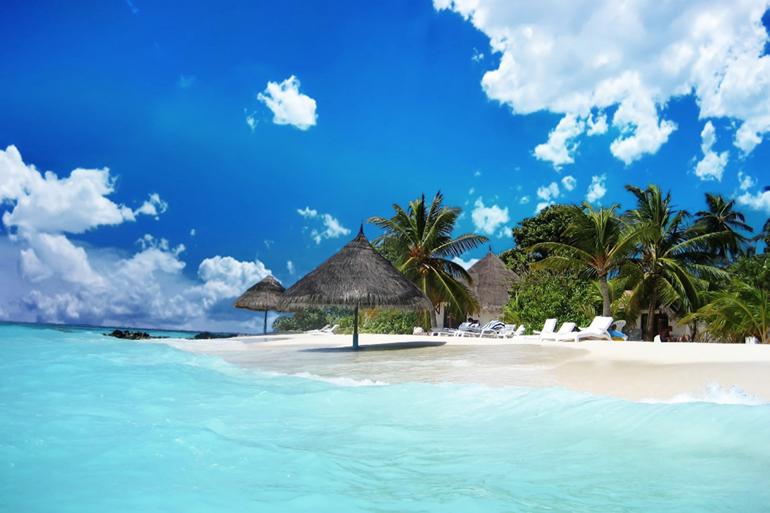
Day 2: Mong Tay Island – Gam Ghi Island – Coconut Prison
AM: Reach to An Thoi harbor, board to Mong Tay island for sunbathing and scuba diving, then continue cruising to Gam Ghi Island to swim by the coral reef and snorkel alongside tropical fish. Have lunch with fresh seafood on board.
PM: Get back to the land and stop by the Coconut Prison. Witness the true history during the Vietnam war and appreciate the peace you are enjoying. Dine at Duong Dong town and have some fun at local club.
Day 3: Tranh Stream – Ganh Dau Cape – Phu Quoc National Park
AM: Head north to visit Tranh Stream and Ganh Dau Cape. Enjoy spectacular and tranquil scenery. Have lunch with some of Phu Quoc specialties at streetside restaurant.
PM: Strike out into Phu Quoc National Park and take an outdoor adventure. Explore rare wildlife of unique flora and fauna, trek across evergreen forest and dense mountain ranges until late afternoon.
If you are a vetaren backpacker, please feel free to manage the trip your own and alter it when needed, else, we recommend you join a tour organized by a professional company, that can free you from hassles and keep you safe throughout the journey.
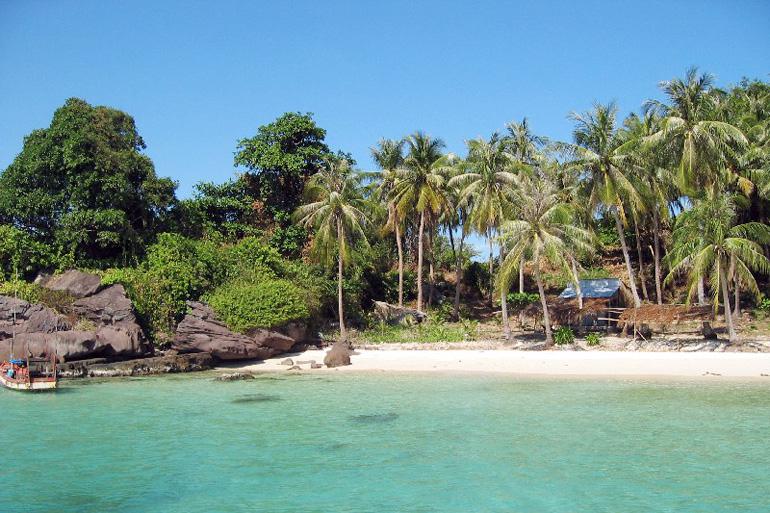
1. Ham Ninh Flower Crab: Flower crab is the specialty of this island and readily available in many local restaurants. The fresh red flower crabs get an amazing taste and rich texture when being boiled and dipped in the sauce made from black pepper, salt, and lime juice. You are even allowed to pick up the freshest crab in a tank and ask the waiter to cook the dish you chose.
2. Grilled Abalones: Although grilled abalones in Phu Quoc are quite expensive, they are worth trying because of their delicious taste and nutritious values. Abalones are really soft, sweet and juicy. Hence, they are the best when being grilled and served with a sauce made from minced ginger, garlic, fish sauce, sugar, chili, and black pepper. The slightly sweet and tasty dipping sauce and soft juicy abalones will bring to you a lifetime food experience.
3. Bailer Shell: Bailer shell is a nutritious food all eaters. Bailer shell meat is divided into two edible parts – chewy white meat and rich soft brown part called roe. The cooked white meat is thinly sliced and mixed with diced banana flower, Vietnamese mint leaves, chili peppers, cooking oil and other spices. Roe is then placed on top and the dish is sprinkled with roasted peanuts at the end. Bailer shell is a very large sea snail that can weigh up to over 1kg with over 0.5kg of meat. This large sea snail usually lives in reefs under the sea or shallow sublittoral zones.
4. Raw herring salad: Raw herring salad is a rustic dish but also the favorite one of the locals on Phu Quoc. People call it salad but the way they eat this dish is pretty different from the other normal Vietnamese salads. Shredded coconut and raw fish will be mixed with mint and onion, then wrapped with fresh vegetables in rice paper and dipped in fish sauce. You can also pick up pieces of raw fish, vegetables, coconut and then wrap them all with rice paper. The sauce served with raw herring salad is also very special. It is made from finely chopped chili, garlic and toasted peanuts which are all mixed with Phu Quoc fish sauce in order to create a spicy, fragrant and unforgettable flavor.
5. Boletus Soup: For the locals, boletus soup is a special dish. Boletus only appears in deep forests in rainy season so it is difficult to plant them. Moreover, these special mushrooms grow and die quickly so they must be picked up within one week after the rain. The soup which is made from boletus, fresh squids, shrimps, minced meat and spicy black pepper is definitely an unforgettable dish. If you come to Phu Quoc in the dry season, you are just able to enjoy dried or frozen boletus which is absolutely not as good as the fresh ones. While fresh boletus is cooked with shrimps, fish, and squid, the dried ones are stir-fried with abalones or sea cucumbers. The soup is flavored with the sweetness of boletus, fragrant aroma of black pepper and becomes much tastier when being served with Phu Quoc fish sauce.
6. Grilled Sea urchin with grease and spring onion: Grilled sea urchin is a favorite dish in Phu Quoc because it can retain the richness of the urchins. Despite its ugly appearance, sea urchins become a tempting dish thanks to clever chefs. After the thorns of fresh sea urchins have been removed, the sea urchins will be cut in half, washed and drained then topped with grease, spring onion and grilled on hot charcoals at the end. After being cooked, sea urchins are aromatic. You just need to take a spoonful of the flesh and eggs inside then enjoy with a mixture of salt, black pepper, and lemon juice. The richness of sea urchins mingled with the fragrant aroma of roasted peanuts, grease and spring onion provide an incredible feeling.
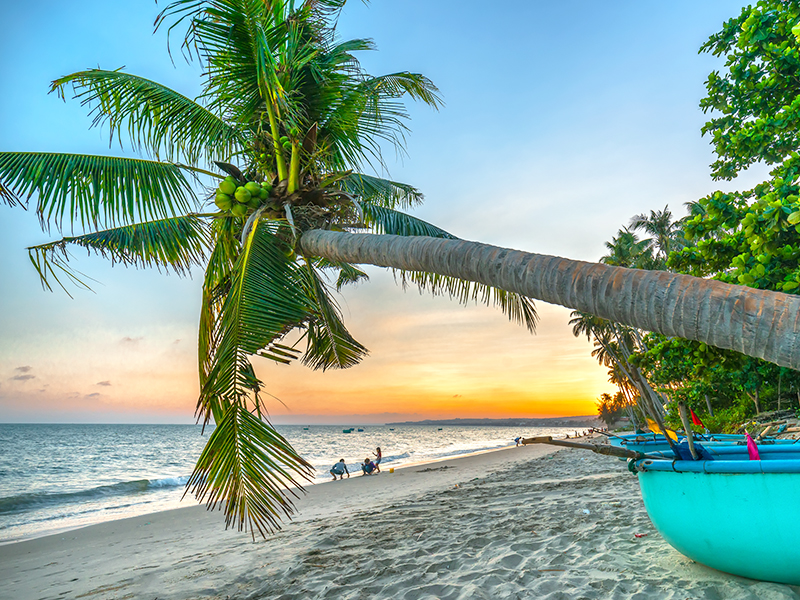
From October to early November is the best time for Phu Quoc’s weather on display, featuring the most desirable setting for the best Phu Quoc trip. Rains have faded away and the tourists have yet to come crowdedly. During this time, the beaches are sparkling, pellucid waters are shimmering and the palm trees are dancing beneath a cloudless sky.
Yet, you can sunbathe, snorkel and swim at Long Beach and Ong Lang Beach. Also, Phu Quoc National Park and Suoi Tranh Waterfall are great for picnicking, jungle-trekking, camping, or simply sightseeing.
However, the ideal weather condition is accompanied by a peak travel season. Beware of rising rate in service and accommodation during this time.
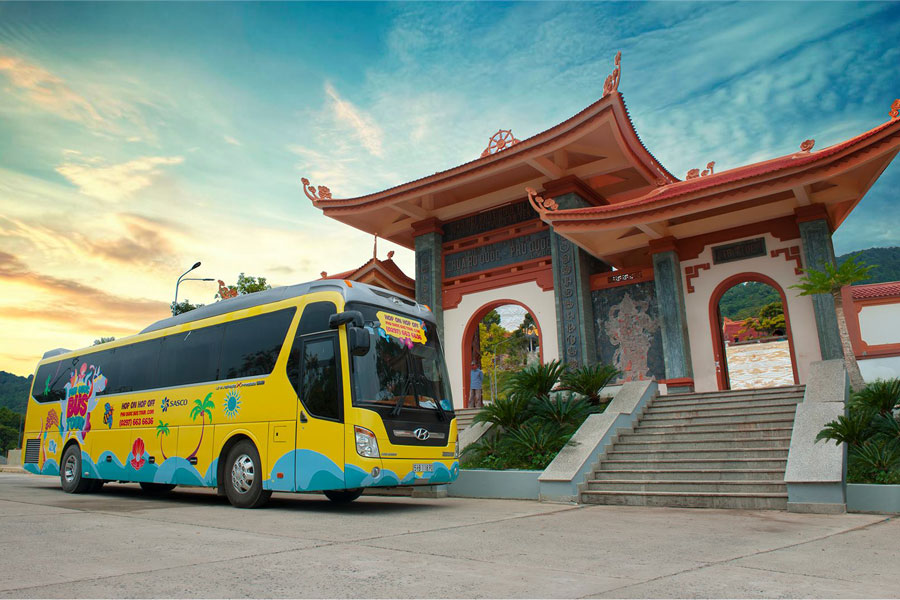
1. Open bus: Though it might take longer with several transits during the way to the island, still it is the most taken vehicle by locals and tourists. The bus ticket can be bought at Mien Tay Bus Station in Ho Chi Minh. The bus will take you to the city of Rach Gia in 6 hours first, then you’ll have to spend another 2 hours getting to Ha Tien Pier, where to catch a ferry transferring passenger to Phu Quoc island.
Note that the ferry leaves only twice a day (at 9 am and 1 pm). All buses operating on this route (so-called ‘sleeping buses’) depart at nighttime only and are punctual, so you shouldn’t be late for departure or during the stops because the bus may leave without you.
Duration: 11 hours
Cost: from $20 (~VND450K)

2. Flight: are operated by Vietnam Airlines, Jetstar and Vietjet Air, which some of them are the budget airlines. All flights are at. Yet it is comfortable that there is only 2 km between Duong Dong Airport and Phu Quoc, so you can get there even on foot. However, beware of delay or cancellation, since they often happen.
Duration: 1 hour
Cost: from $110 (~VND2.600K)
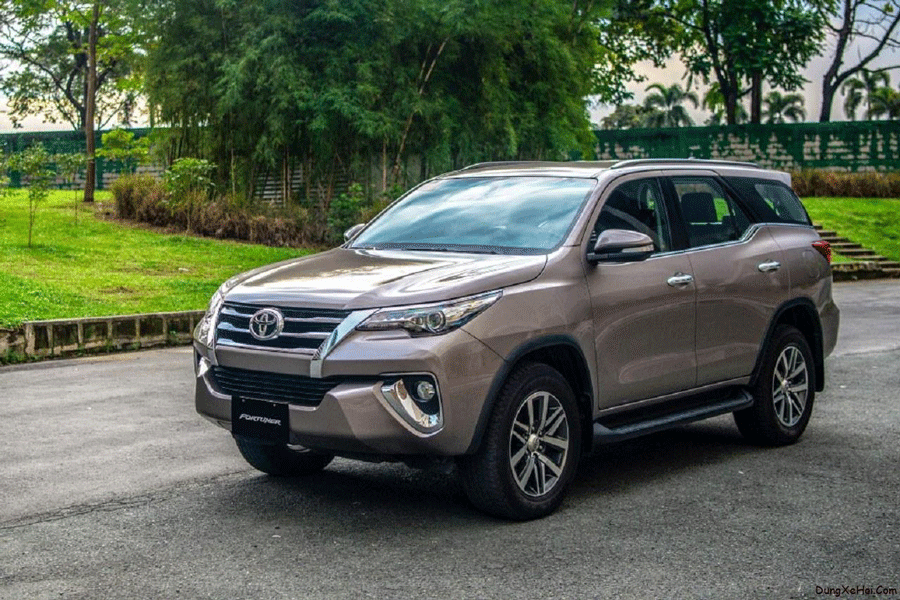
3. Private cab: Traveling on the same route with the open bus, but no need to wait on stops or be afraid of missing out the next transit. This way is definitely comfortable, however, is the most expensive also that you may consider before booking.
Duration: 10 hours
Cost: from $230 (~VND5.000K)
Throughout this article, we wish you to have an idea of how to travel to Phu Quoc for your best experience. In case you are looking for your own travel agent, who can offer a wonderful and hassle-free trip to Phu Quoc, please feel free to let us know. We always commit our best to make it your once-in-a-lifetime journey.
You may also like
Diving & Fishing In Phu Quoc 4 Days
- Depart Time:Daily
- Starts/Ends:Phu Quoc/Phu Quoc
- Tour type:Private Tours
- Travel Style:Nature & Adventure, Family Tours
- Activities:Active and outdoor tours, Walking tours, Sightseeing Tours
- Suitable for:Solo, Family, Group, Couple
- Age range:1 To 90 Years
- Operated in:English, French, Spanish, German, Italian
Phu Quoc Sightseeing 3 Days
- Depart Time:Daily
- Starts/Ends:Phu Quoc/Phu Quoc
- Tour type:Private Tours
- Travel Style:Nature & Adventure, Family Tours
- Activities:Active and outdoor tours, Walking tours, Sightseeing Tours
- Suitable for:Solo, Family, Group, Couple
- Age range:1 To 90 Years
- Operated in:English, French, Spanish, German, Italian
Phu Quoc Adventure 2 Days
- Depart Time:Daily
- Starts/Ends:Phu Quoc/Phu Quoc
- Tour type:Private Tours
- Travel Style:Nature & Adventure, Family Tours
- Activities:Explorer tours, Sightseeing Tours
- Suitable for:Solo, Family, Group, Couple
- Age range:1 To 90 Years
- Operated in:English, French, Spanish, German, Italian
 France
France  Spain
Spain  German
German  Italian
Italian 




 Vietnam Tours
Vietnam Tours  Cambodia Tours
Cambodia Tours  Myanmar tours
Myanmar tours  Thailand Tours
Thailand Tours  Laos Tours
Laos Tours